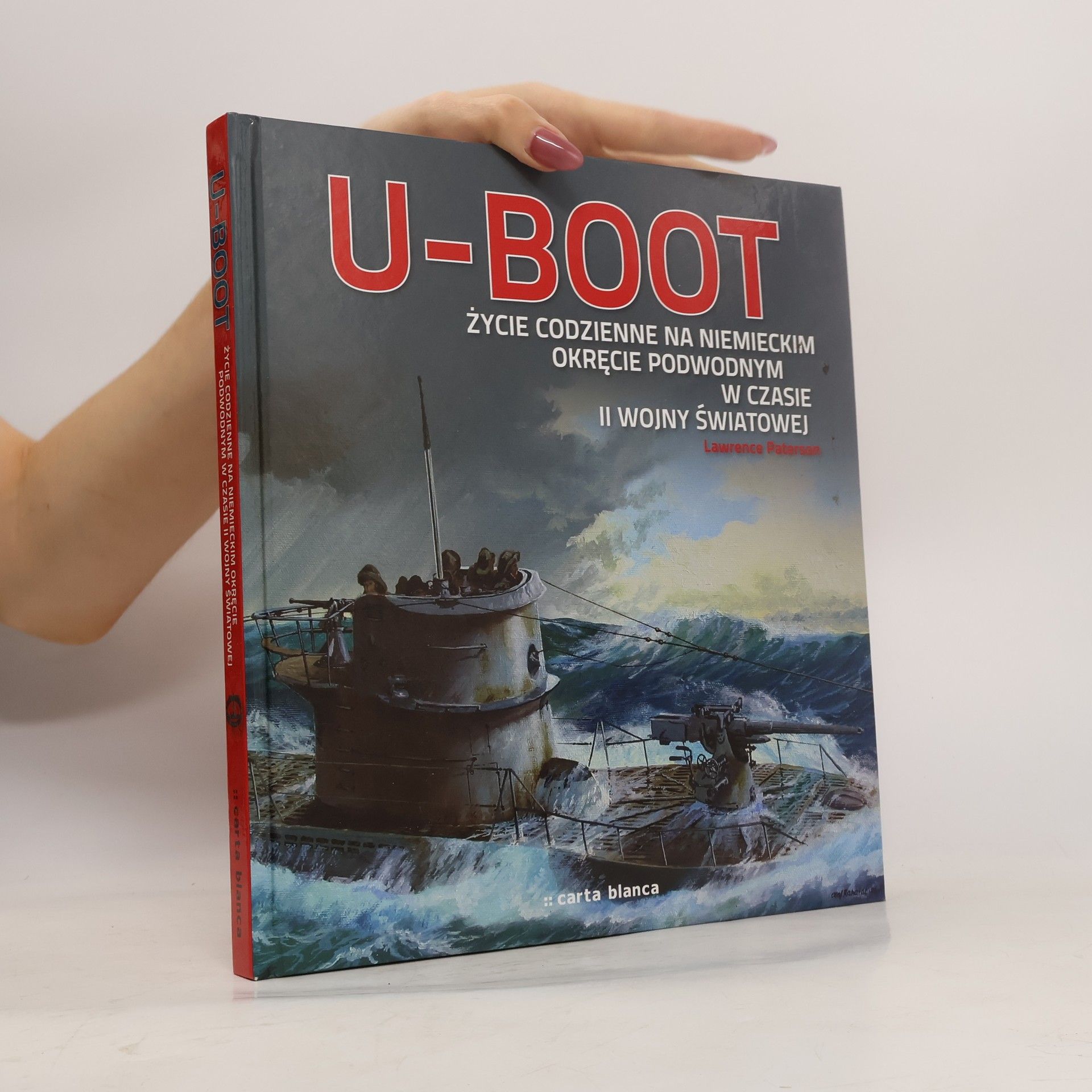A detailed examination of the before, during and after of Operation Colossus, the first British airborne raid of WWII. Draws on interviews with relatives of some the men involved and unearths previously unknown facts and information.
Lawrence Paterson Boeken
Deze auteur heeft een diepe fascinatie voor geschiedenis, met name de Tweede Wereldoorlog, wat hun literaire output diepgaand vormgeeft. Hun werk duikt in de complexiteit van historische gebeurtenissen en de menselijke ervaringen binnen die contexten. Door middel van hun schrijven bieden ze lezers boeiende inzichten in het verleden. Deze unieke kijk op geschiedenis verrijkt hun onderscheidende literaire stijl.







The history of fast attack craft is a perennial favourite amongst naval enthusiasts. New, affordable paperback edition. Large selection of rare photographs.
A comprehensive, detailed and unbiased history of Hermann Goring's panzer division.
First U-Boat Flotilla
- 224bladzijden
- 8 uur lezen
Formed in 1935, First U-Boat Flotilla operated against Hitler's enemies from the very earliest stage of the war through to September 1944 when disbanded amid the flames of Brest during the US siege. Over seventy-five per cent of operational U-boats were lost as the Allies' counter-measures and code-breaking successes took ever greater effect. This fascinating work records the Flotilla's successes and disasters in detail.
Eagles over the Sea, 1943-45
- 448bladzijden
- 16 uur lezen
The first ever full account of all the Luftwaffe's naval operations, detailed yet highly readable account, contains a superb collection of rare photographs.
A well-illustrated history of a hitherto untold and ignored U-boat story
"The first complete history of the U-boat war in its entirety, a story which began on the very first day of hostilities in 1939 and did not end until the final torpedo sinking on 7 May 1945. It details the Wehrmacht's disastrous decision to despatch Dönitz's U-boats to the Mediterranean; the actions of U-boats at the extremities of the Eastern Front, where, despite the legendary destruction of the PQ17 convoy, they failed to turn the tide of war; and smaller but crucial operations throughout the Indian Ocean and southern Africa. What becomes increasingly clear throughout these dangerous and costly deployments is how U-boat operations were inexorably tied to an increasingly inefficient global naval stategy. This ... book details the U-boats' often direct relationship with land, sea and aerial campaigns of both the Allied and Axis powers, dispels certain accepted mythologies, and reveals how the ultimate failure of the U-boats stemmed as much from chaotic German military and industrial mismanagement as it did from Allied advances in code-breaking and weaponry"--Dust jacket flap.
Otto Kretschmer. Život německého ponorkového velitele s nejvyšším skóre potopené tonáže
- 296bladzijden
- 11 uur lezen
Otto Kretschmer bojoval ve válce od září 1939 do března 1941 a stal se nejúspěšnějším ponorkovým velitelem, když potopil 47 lodí o celkovém výtlaku 274 333 tun. Tento autoritativní životopis zachycuje jeho osobní příběh a kariéru námořního důstojníka od 1. dubna 1930, kdy vstoupil do malého námořnictva Výmarské republiky, až do roku 1970, kdy odešel do důchodu jako admirál Spolkové republiky Německa. Kretschmer byl přijat do Hitlerovy ponorkové zbraně v lednu 1936 a v říjnu 1937 převzal velení ponorky U-23. Poprvé vyplul do boje v roce 1939 a na jaře 1940 prokázal své schopnosti, když byl převelen na výkonnější U-99. Během bitvy o Atlantik se stal jedním z nejznámějších ponorkových es, dokud nebyl v březnu 1941 jeho ponorka potopena a on zajat. Kretschmer byl průkopníkem nových taktik, útočil v noci a vynořený, a jeho pruská málomluvnost mu vynesla přezdívku „Tichý Otto“. Životopis podrobně popisuje jeho vojenské úspěchy, každou bojovou plavbu a zároveň nahlíží do jeho tajemné osobnosti, což činí tento příběh fascinujícím a významným v kontextu druhé světové války.
Brandenburg - Hitlerovy elitní speciální síly
- 390bladzijden
- 14 uur lezen
Na všech frontách druhé světové války bojovaly také Hitlerovy oddíly zvláštního určení. Tato kniha je zatím nejucelenějším přehledem jejich aktivit. Zkušený vojenský historik Lawrence Paterson sleduje vývoj těchto netypických a vysoce efektivních speciálních sil od původně malého útvaru, jehož duchovním otcem byl admirál Canaris a který byl součástí jeho zpravodajské organizace už před vypuknutím války, až po vytvoření konvenční divize pancéřových granátníků. Při té příležitosti mnozí příslušníci jednotky Brandenburg přešli ke Skorzenyho neblaze proslulým SS Jagdverbände… Paterson představuje klíčové postavy, které zásadním způsobem ovlivnily vývoj německých speciálních jednotek, podrobně rozebírá detaily klíčových operací a přináší mnoho dosud nepublikovaných informací. Součástí publikace je rozsáhlá fotopříloha tvořená unikátními dobovými snímky.

